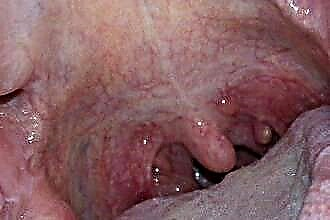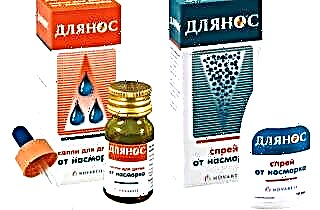Among the methods of treating maxillary sinusitis, recipes of traditional medicine occupy a special place. They are available, have few side effects, and can be used at home without a prescription. Alternative therapy includes the use of honey and other beekeeping products, medicinal herbs, hydrogen peroxide, vegetables and many other components. Against their background, the treatment of sinusitis with chestnut stands out for its originality.
The chemical composition of the components of chestnut and their properties
 In nature, there are two types of chestnuts: noble and horse. In our area, a horse chestnut (or stomach) grows, it is a tall tree (up to 20-25 meters) with a dense crown. Its fruit is a large seed, similar to a nut, enclosed in a tricuspid box with thorns. In addition to fruits, the bark, leaves and flowers of the plant are of interest for pharmaceuticals.
In nature, there are two types of chestnuts: noble and horse. In our area, a horse chestnut (or stomach) grows, it is a tall tree (up to 20-25 meters) with a dense crown. Its fruit is a large seed, similar to a nut, enclosed in a tricuspid box with thorns. In addition to fruits, the bark, leaves and flowers of the plant are of interest for pharmaceuticals.
The seeds of the plant contain many chemical compounds that, if used correctly, can have a healing effect on the human body:
- starch - 50%;
- saponins (escin, fraxin, esculin, arthrescin) - 10%;
- protein - 10%;
- fatty oil - 6%;
- flavonoids;
- vitamins B, C, K;
- minerals (phosphorus, potassium, iron, zinc, selenium, chromium).
The bark of the tree is rich in tannins, escin and esculin, and the leaves are rich in carotenoids, astralgin, rutin and flavonoids. Preparations made from chestnut seeds have the following properties:
- reduce blood clotting;
- improve microcirculation of blood in blood vessels and strengthen capillaries;
- resist bacteria;
- reduce inflammation and tissue swelling;
- promote wound healing, regenerate the mucous membrane;
- have a mild analgesic effect.
The medicinal properties of the plant are used for sinusitis, vascular diseases, hemorrhoids, varicose veins, ulcers, joint diseases, prostatitis.
Antibacterial and anti-inflammatory properties of the fruits of the plant. In what situations is chestnut-based treatment contraindicated.
Due to its anesthetic, bacterial and anti-inflammatory properties, it is recommended to use chestnut for sinusitis in an acute form, in an advanced stage and for chronic maxillary sinusitis.
In any case, before treating sinusitis with chestnut, you need to get professional advice from an otolaryngologist.
Chestnut can be used throughout the treatment of acute sinusitis, usually at least 5 days. However, it is impossible to cure an ailment with the help of a single herbal remedy, folk recipes are auxiliary to conservative therapy with the use of antibiotics, antihistamines and vasoconstrictor drugs.
 The substances contained in the plant have a high biological activity, therefore, in some situations, they can be harmful. It is contraindicated for sinusitis to use preparations prepared on the basis of horse chestnut in the following circumstances:
The substances contained in the plant have a high biological activity, therefore, in some situations, they can be harmful. It is contraindicated for sinusitis to use preparations prepared on the basis of horse chestnut in the following circumstances:
- women during lactation or pregnancy;
- children under adolescence (12-13 years old);
- peptic ulcer in the acute stage;
- kidney and heart disease;
- low blood clotting rate;
- low blood pressure;
- tendency to nosebleeds;
- thrombocytopenia.
It is better to refuse this type of treatment if there is pus in the sinuses, high body temperature and severe intoxication of the body.
The fruits of the horse chestnut cannot be used for food, this can lead to severe poisoning, you can only eat the seeds of the noble chestnut, which does not grow in our country.
How and when are chestnuts harvested
It is best to harvest seeds in August and early September, until they are fully ripe. At this time, they are especially rich in nutrients. It is advisable to collect kernels in parks, forests or gardens in the countryside, away from industrial sites and busy highways.
The fruits should be peeled from the green peel, rinsed thoroughly and dried. After that, they are placed in an airtight container or plastic bag, and stored in the freezer of the refrigerator throughout the year. After thawing, the kernels are ready for use.
Alternatively, it is possible to store seeds in a cool dry place (basement or cellar). In this case, they dry out, therefore, to prepare drugs for sinusitis, chestnuts need to be soaked in water for 2-3 days.
Leaves can be harvested starting in May while they are green. After drying, they should retain their color and pleasant smell.
Chestnut nose turundas
Placing turundas from horse chestnut fruits into the nasal passages is widespread. The reason for this is the ease of preparation and the active effect on the disease. It is best to use fresh seeds containing the maximum amount of biocomponents, but dried seeds soaked in water are also suitable.
Recipe number 1. Chestnut kernels are poured with boiling water for half an hour to swell. After that, the brown thin skin is peeled off. From the pulp, 2 blocks (rods) in the form of turundas are carefully cut out of such a size that they can enter the nostrils without effort. With the help of a thin stick, the blocks are inserted deep into the nasal passages, you can spread them with liquid honey. For easy extraction, you must first make small holes in the rods and thread through them. There are two options for putting such turundas in your nose:
- insert for 5-6 minutes in both nostrils, after which it is good to blow your nose, you can make one turunda and insert them into the nasal passages alternately. The treatment is carried out once a day every other day, 3-4 sessions are enough;
- insert the rods into the nose for 5 minutes, then rinse the nasal cavity and blow your nose, repeat several times in a row for 40-50 minutes. The procedure should be done daily for 5-7 days.
Recipe number 2. Soak the fruit of the plant in cold water for 2-3 hours, then remove and remove the thin outer skin, and cut off thin shavings from the pulp with a knife. Using a cotton swab, insert the shavings into the nasal passages, but not too deeply, and keep them there for 10 minutes. The duration of treatment is from 5 to 10 days, depending on the form of the disease (acute or chronic).
In both cases, the result of the laying of the turunda is an abundant discharge of mucous accumulations, which can last an hour or more. Thanks to this, the sinuses are deeply cleansed, breathing is normalized, and the headache recedes.
Too frequent use of chestnut turundas can result in stagnation of mucus in the sinuses, burns or atrophy of the mucous membranes of the nose, the transition of the pathogen to another sinus.
Inhalation with plant derivatives
Inhalation of hot vapors of biologically active plants in alternative medicine is used at the onset of sinusitis or during the recovery phase. By heating the tissues of the nose and sinuses, blood circulates more actively in the area of the affected organ and helps to increase the body's resistance to pathogens at the local level.
 The most famous inhalation recipes:
The most famous inhalation recipes:
- Grind dry chestnut leaves to make 3 tablespoons of powder, and pour in one and a half liters of boiling water. Boil in a water bath for 30 minutes, then breathe in hot steam for 20 minutes. For the best effect, cover your head with a towel and close your eyes so as not to irritate the cornea.
- Buy chestnut essential oil at the pharmacy. Pour 5-6 drops of oil into a saucepan with boiling water (1.5-2 liters) and breathe for 10 minutes using the same technique. Unlike leaves, essential oil can cause allergies in some people.
With purulent sinusitis, when heating is excluded, it is good to use cold inhalations. To do this, it is enough to pour a few drops of essential oil into an aroma lamp or aroma stone and inhale deeply for 8-10 minutes.You can drop the oil several times on a clean cloth or inhale it directly from the bottle.
Other proven chestnut recipes
In addition to turunda and inhalations, there are other methods of treating sinusitis with the use of a stomach. Among the unconventional recipes, it is worth highlighting rinsing and acupuncture.
Acupressure. For a session, 8 ml of chestnut essential oil are mixed with 40 ml of base oil (peach, linseed, olive, sunflower). The following points are smeared with the mixture:
- above the middle of the eyebrows (paired);
- the tops of the nasolabial folds (paired);
- on the crown of the head, at the level of the tips of the auricles;
- in the area of the mastoid processes behind the ears.
The points are massaged at a calm pace for about 5 minutes three times a day. The duration of the course is 10 days.
Rinsing the nose. The cleaned kernel of the plant is crushed and then ground into powder. A teaspoon of the resulting powder is poured into 200 ml of boiled warm water and infused for 8-10 hours. After that, the liquid is filtered and used for washing according to the standard technique twice a day. The entire course lasts 7 days.



